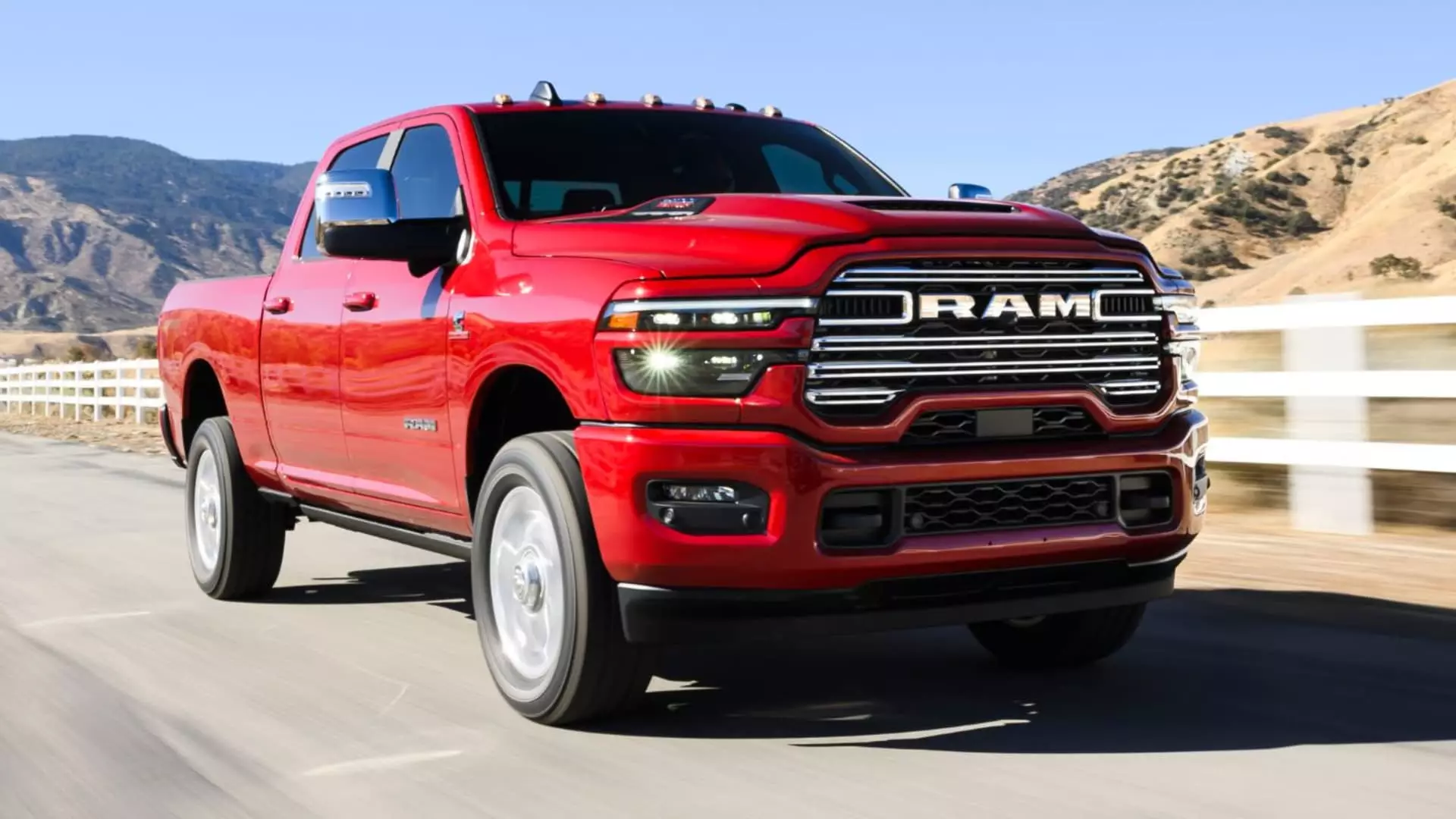Stellantis is making a bold move with its redesigned Ram heavy-duty trucks, the 2500 and 3500 models. These latest iterations are not just a facelift; they represent a comprehensive effort to revive the brand amidst a notable decline in sales over the past three years. With the introduction of innovative features and enhancements, Stellantis hopes to restore Ram’s competitive edge in an increasingly crowded pickup truck market.
One of the most talked-about updates is the new 6.7-liter Cummins turbo diesel engine that powers the heavy-duty models. Boasting an impressive output of 430 horsepower and a remarkable 1,075 foot-pounds of torque, this engine positions the Ram trucks as top contenders in the performance department. Such capabilities are particularly appealing to customers who depend on their vehicles for heavy towing and hauling, reinforcing the idea that Ram trucks are built for work. Additionally, there is an alternative 6.4-liter Hemi V-8 engine available, delivering 405 horsepower and 429 foot-pounds of torque, thus appealing to a broader audience with varying performance needs.
Beyond the powerhouse engine options, the redesigned Ram trucks feature significant aesthetic upgrades. Both the interior and exterior have undergone meticulous redesigns aimed at enhancing user comfort and driving experience. The updated interiors promise improved technology and convenience features, catering to a tech-savvy consumer base that values connectivity alongside rugged performance. As customers now prioritize functionality and comfort, Stellantis is keenly aware that the designs must reflect these expectations.
With a starting price of approximately $47,560, which is about $2,300 more than the previous models, Stellantis seeks to position these trucks within a competitive pricing strategy. The investment is expected to pay off as the heavy-duty trucks roll out to U.S. dealerships, slated for early this year. However, this price point raises questions about whether customers will see the value to justify the increase, especially in a market where economic factors heavily influence purchasing decisions.
Ram’s struggles are palpable, as the brand recorded a 19% year-over-year drop in vehicle sales in 2024, with substantial contributions from the declining performance of the Ram pickup models. Tim Kuniskis, Ram’s CEO, candidly acknowledged the brand’s difficulties during a recent media event, attributing severe sales drops to production delays and the protracted rollout of the Ram 1500 model. The heavy reliance on the successful introduction of these models underscores the urgency for Stellantis to execute a strong marketing and distribution strategy.
The reengineering of Ram’s heavy-duty trucks reflects Stellantis’ commitment to revitalizing its brand. However, persistent sales challenges underscore the importance of effective execution and market adaptation in a competitive landscape. As dealers prepare for the arrival of these new models, all eyes will be on whether these ambitious updates will be sufficient to draw customers back to the Ram brand, particularly when faced with strong competitors like Ford and Chevrolet, who have managed to hold their ground in recent years. In an era where consumers demand both power and luxury, the Ram heavy-duty lineup must not only meet expectations but exceed them if it aims for a reversal of fortune in the marketplace.

